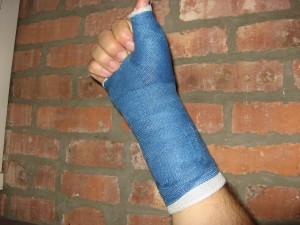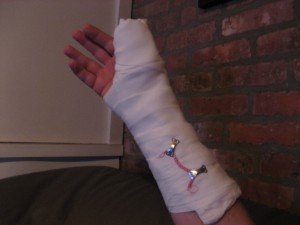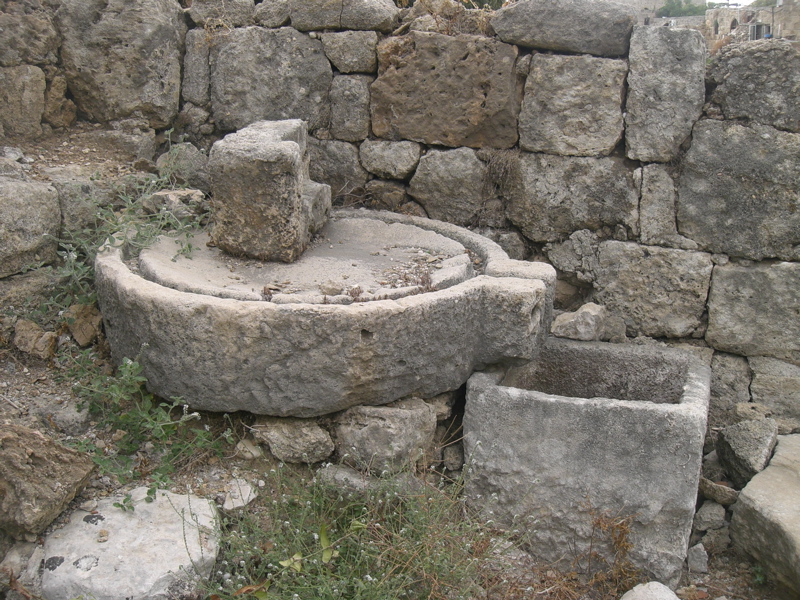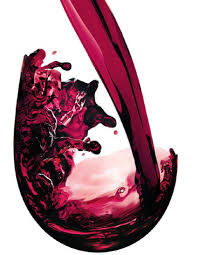I recently attended an Israeli wine tasting consisting exclusively of the wines of “Clos de Gat”. This clever name, was derived from the French word Clos, meaning a walled vineyard, and Gat which in Hebrew is an ancient wine press. The winery, located at the foothills of the Judean Mountains (where David slay Goliath), is actually in an enclosed winery property that contains an ancient wine press dating back over 3,000 years (talk about “old world” wine region!).

I am pretty familiar with the wines of Clos de Gat as I sold these wines throughout NYC when they were first imported into the country several years back. I have also had the good fortune of meeting with the winemaker at the winery and hearing some of his winemaking philosophies. Of particular interest are his dry farming, use of wild yeasts and open vat fermenting practices. Regardless of HOW he is doing it, what he is doing seems to be working! Consistently ranked among the best Israel has to offer CDG also attains high scores from critics in Europe as well as Stateside.
As to the wines themselves, they are very much in the modern mode; big, extracted and quite robust. Terrific beef/game steaks! While some of the older wines (from the 2003 & 2004 vintages) showed very nice elegance.

I must admit that I did have a favorite, and it was a wine that is new to me. It is also probably the least expensive of all the CDG wines. It was the white wine blend known as “Chanson”.
The 2007 Chanson, a complex blend of 75% Chardonnay, 15% semillon, 7% Viognier & 3% Chenin Blanc seems to be a hodgepodge wine made from experimental fruit. Which it may well be. Nonetheless, this clear deep yellow-light gold wine has a bready/yeasty nose, with notes of honey & lime. On the palette flavors of yeast (lees stirring?), honey & white flowers. There was also what seemed like a hint of intentional oxidation. It was not the slightest bit off-putting and actually reminded me a tad of some old Lopez Heredia whites (but not quite). This crisp unoaked wine was refreshing and had a nice long finish.
From the Chanson we moved on to the 2006 CDG Chardonnay. A full bodied oaked Chard that was a favorite for some. This wine excellently mimics white Burgundy.
Moving right along to the reds, the 2006 “Harel” Syrah, blended with 15% Cabernet Sauvignon was inky, extracted with a burst of berries that seriously coated the mouth. Though CDG does well with various varietals, and I am always amazed at the Merlot from CDG, Syrah might be the varietal that does best in the Judean Hill region.
At this point we moved on to the 2005 “Harel” Merlot which could stand up to the best new world merlots. And then on to the 2006 “Harel” Cabernet Sauvignon which I found to be a bit jammy and seemed to have a good deal of residual sugar.
Moving beyond the (anything but simple) entry level “Harel” series, we tried the 2004 CDG “Ayalon Valley”, Bordeaux blend. Though the highly regarded “Sycra” series was still ahead, I think this Bordeaux blend was showing best this evening. The blend of 63% Cabernet Sauvignon, 30% Merlot & 7% Petit Verdot was clear and deep red with a garnet, almost brick rim. Aromas of black cherry, jasmine, spices & herbs with a mouthfeel that was soft & silky I would say that this wine is comfortably at its peak. A long elegant finish had me craving a good rare steak (though I am sure the 9 days [with no meat] played a supporting role in that craving).
The final two wines came from the aforementioned “Sycra” series. First was the 2003 Sycra merlot that had aromas of berries, herbs & cola and while extracted it was not overpowering and had a long finish. While the 2004 Sycra Syrah was inky with blueberry, black berry & charcoal aromas, silky tannins and a long finish.
In all this tasting, while not timed best for some of us (aforementioned 9 days), CDG once again proved that the best wines from Israel can comfortably hold their own with the best from other new world wine producing regions and will undoubtedly be a force in the ever expanding world class wine category.
Happy Israeli wine tasting!
WTG


















